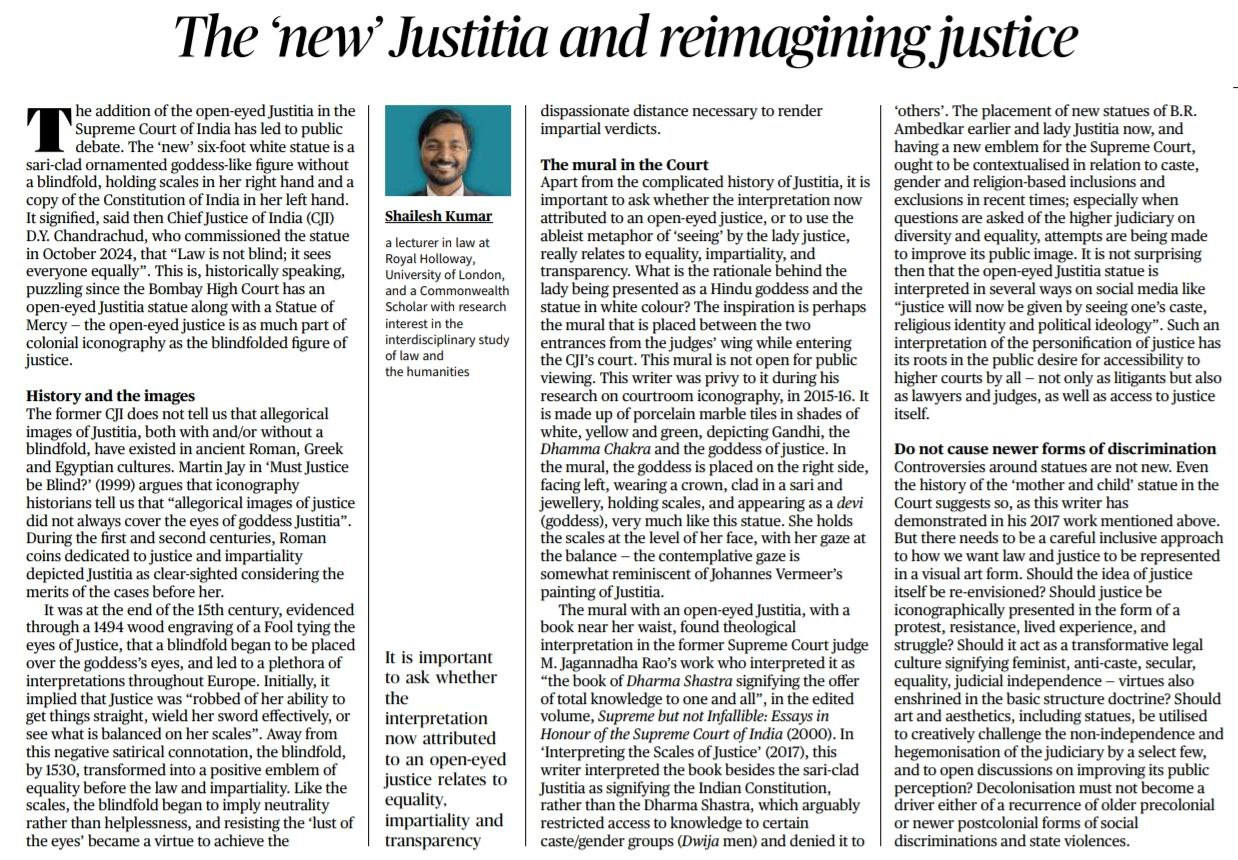1. Reimagining Justice: The Debate Around the Open-Eyed Justitia in India
Introduction:
- The newly unveiled statue of Justitia in the Supreme Court of India depicts an open-eyed representation, diverging from the traditional blindfolded figure.
- This change has sparked debates about its symbolism in terms of impartiality, inclusivity, and justice.
- Historical Context:
- Justitia, the Roman goddess of justice, is traditionally portrayed with scales, a sword, and a blindfold, symbolizing balance, authority, and impartiality.
- Historically, allegorical representations of justice, both blindfolded and open-eyed, have existed across Roman, Greek, and Egyptian cultures.
- Debate Around the New Representation:
- The open-eyed Justitia holds the Constitution of India and balances scales, indicating inclusivity and transparency.
- However, critics argue that removing the blindfold risks compromising the perception of unbiased justice.
- The figure is also dressed in a sari and presented as a Hindu goddess, raising concerns about representing a particular cultural or religious identity.
- Interpretation and Symbolism:
- The shift from blindfolded to open-eyed may suggest vigilance and proactive equity but risks associating justice with societal biases, including caste and gender.
- A mural within the Supreme Court illustrates a similar representation, indicating consistency in reinterpreting justice.
- Broader Implications:
- The unveiling of such statues reflects broader trends in inclusivity and diversity within Indian judiciary symbolism.
- Some interpretations associate the open-eyed representation with caste or ideological concerns, potentially impacting public confidence in the judiciary’s neutrality.
- Cultural and Legal Debate:
- While the change symbolizes accessibility and inclusivity, it could unintentionally perpetuate exclusivity by aligning with specific cultural motifs.
- The larger question revolves around whether justice should adopt modern, diverse interpretations or maintain universal allegorical traditions.
Conclusion:
- The open-eyed Justitia challenges the traditional concept of impartial justice, sparking necessary debates on inclusivity and representation in the judiciary.
- The conversation underscores the importance of striking a balance between historical symbolism and modern socio-cultural sensitivities to uphold justice as unbiased and accessible.
Mains Practice Question: |
Q: The newly unveiled open-eyed Justitia in the Supreme Court of India has sparked debates about justice, inclusivity, and impartiality. Critically analyze the implications of such representations for the Indian judiciary. |


